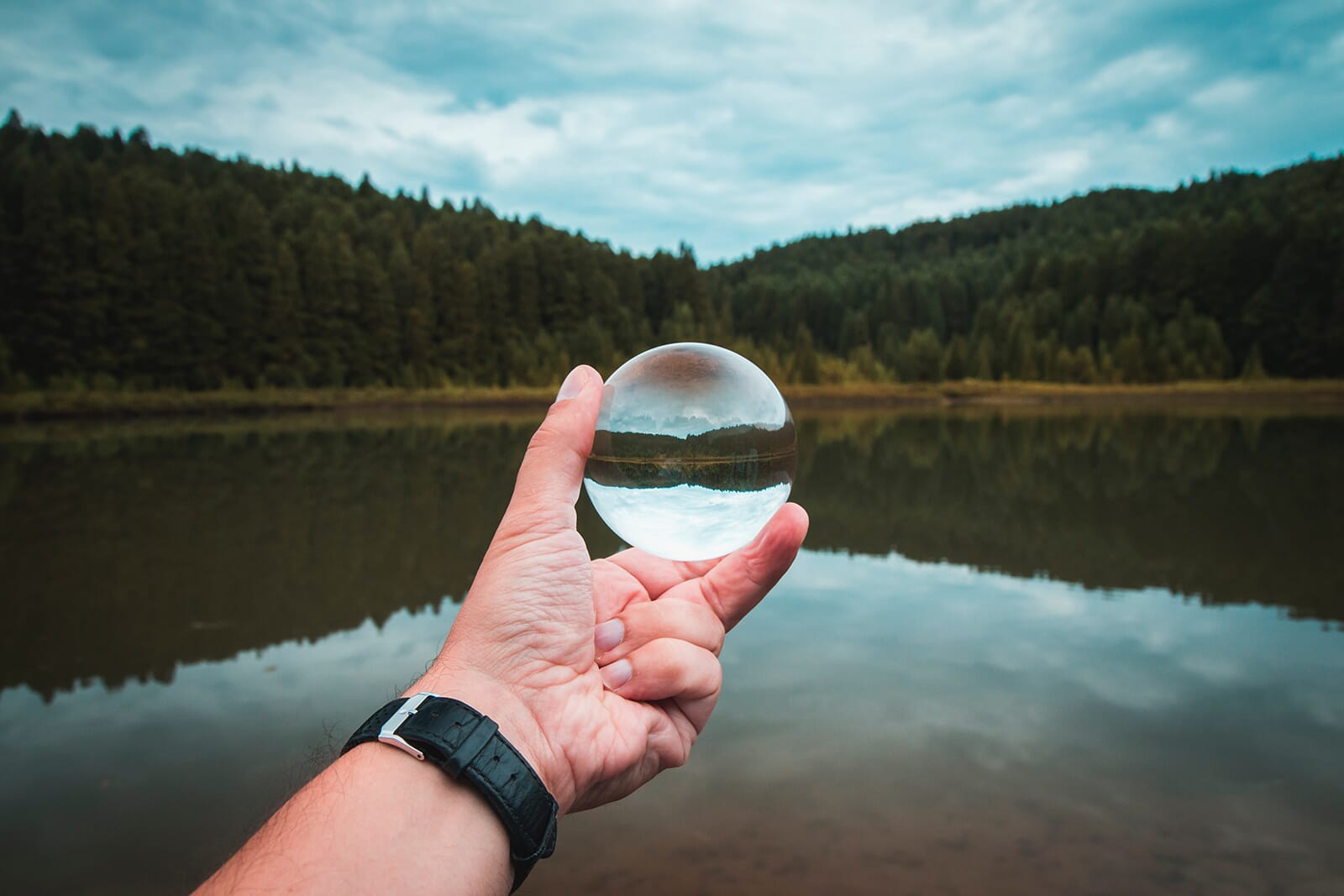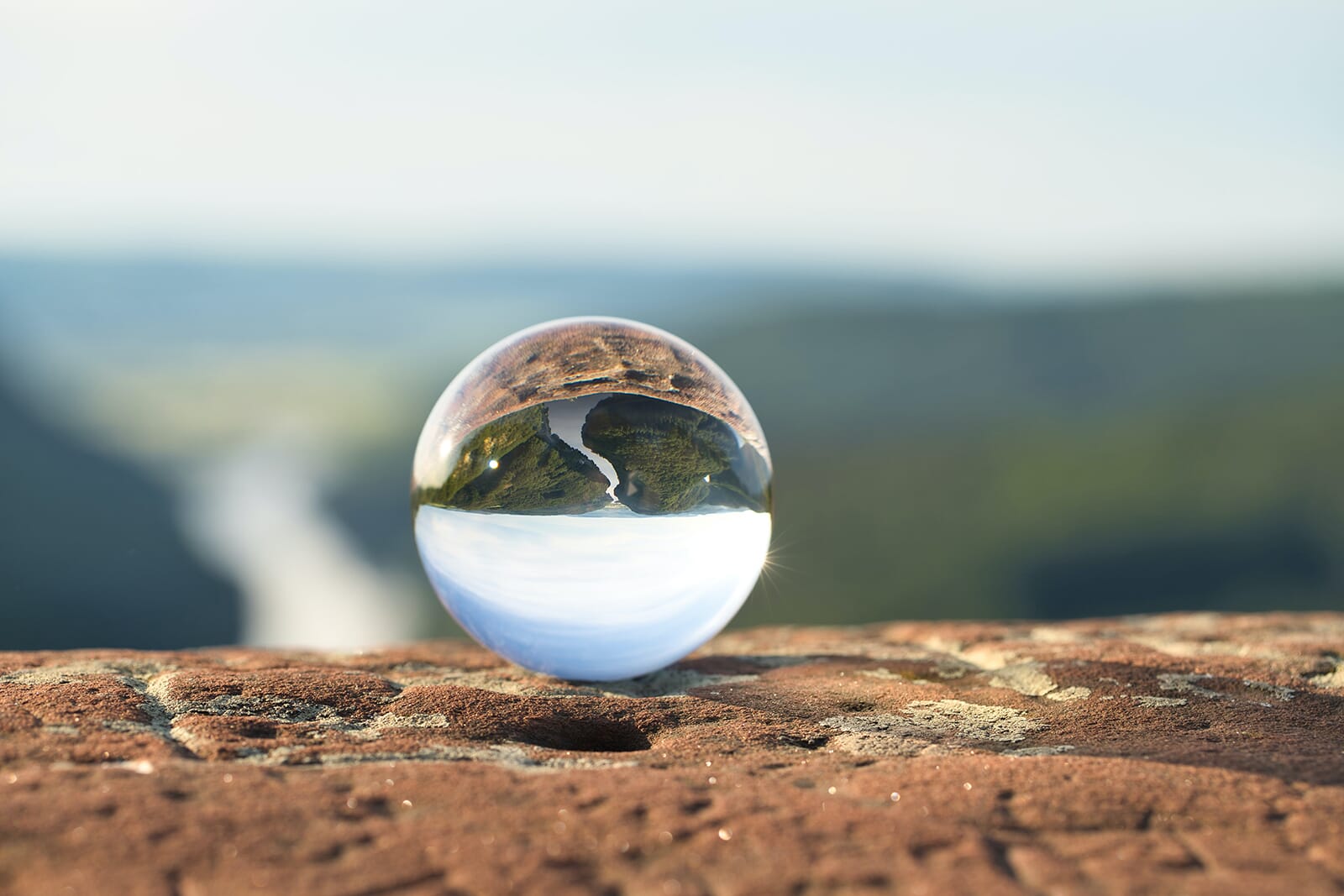Editor’s Key Takeaways: Unleashing Creativity in Photography with 7 Best Lensballs

This blog post highlights the use of lensballs for photographers looking to add a creative flair to their images. A lensball can help photographers experiment with composition and create unique effects. The post lists seven of the best lensballs for photography, including options from brands like MerryNine, Ocular, Besnfoto, Omylens, EMART, and ChezMax.
For those looking to purchase a lensball, the post advises considering size and quality among other factors. Size needs will vary depending on what kind of subject or scene the photographer plans to shoot. For example, shooting landscapes or landmarks requires a larger lensball than shooting macro subjects. Quality is also crucial, as low-quality lensballs are prone to scratch and the resulting images may not meet the photographer’s standards.
Additionally, some lensballs come with features like fixed bubbles for a more creative and less-generic look. The blog post also suggests considering buying a lensball multipack for more creative freedom, even though it might be more expensive. However, for photographers planning to dive deep into lensball photography, this could be a worthwhile investment.
When you buy through links on our site, we may earn a commission at no cost to you. We evaluate products independently. Commissions do not affect our evaluations. As an Amazon Associate, we earn from qualifying purchases.
Introduction
Adding creativity and flair to your images is often the biggest challenge for photographers. One easy way to add that extra spark is with a lensball; you can use it to get creative with composition and experiment with some neat effects.
In this article, we’ve picked 7 of the best options so you can get started with lensball photography, fast.

Best Lensballs:
What Should I Look for in a Lensball?
While you might think buying a lensball is as easy as just picking any old glass ball and calling it a day, there are a few things you should consider before hitting that “Buy” button.
A major factor is going to be the size of your lensball. They can be really small or fairly large (think marble size to around the size of a softball). Depending on the subjects you want to shoot and how much of a scene you plan to feature in the lensball, your size needs will vary.
Someone who wants to shoot vast landscapes or landmarks is going to need something significantly bigger than someone who plans to use their lensball with macro subjects.
Another important component is the quality of the ball. As with any camera accessory, some lensballs are made with cheaper materials. Low-quality options are much more prone to scratching, and the resulting images likely won’t be up to your standards.
Some lensballs come with details, like bubbles, fixed in the ball. If you want something more creative and less generic, finding a lensball with this kind of feature will suit you well.
One final thing to consider is whether you should purchase a lensball multipack. This will offer you lots more creative freedom than a single ball, but it also costs more. That being said, if you plan to really dive into lensball photography, it may be worth the investment.
1. MerryNine K9 Crystal Photography Ball
The MerryNine K9 Crystal Photography Ball is great value and includes a comprehensive set of accessories for versatile lensball photography.
Our top pick is the MerryNine K9 Crystal Photography Ball. This lensball has a combination of superior build quality, excellent price, and a good set of accessories.
The ball is 60 mm in size, making it highly portable but also still maintaining convenience for more vast shots. It is made from industry standard K9 premium optical glass. This provides superior optical performance and prevents distortions in the ball. Additionally, the glass should be on the more durable side, helping it withstand a knock here and there. There is even an additional coating for added protection.
This lensball really offers great value for money. Not only do you get your ball, but there is also a tripod stand with a base, a cleaning cloth, a storage box, and a storage carry case included in the package.
The carry case is worthy of its own special mention – it’s perfectly proportioned to fit the lensball. This means you don’t have to worry about the ball being jostled around in transit.
2. Ocular K9 80 mm Crystal Ball with Stand
The Ocular K9 80 mm Crystal Ball with Stand is a great buy and also includes a large 150 mm triangular glass prism.
If you’re looking for a lensball on the larger side, the Ocular K9 80 mm Crystal Ball with Stand is a stellar pick. At 80 mm, you’ll get a much larger viewing window through lensball which will allow you to frame more of your subject with ease.
Like the lensball above, this option is also made of K9 glass – the industry standard. In this set, you get an added bonus of a K9 glass prism too. The prism is 150 mm long and allows you to experiment with and add additional effects to your photos.
For simple storage, the set includes a high-quality microfiber drawstring pouch. This is great for storing the ball, and it keeps it clean in the process.
One shortfalling of this package is that there isn’t actually anywhere to store the prism. So while it is a nice bonus, it requires some extra investment to ensure its longevity.
3. Besnfoto 90 mm Crystal Ball
The 90 mm size of this Besnfoto lensball gives you more surface area to work with to create impactful lensball photos.
If you want something a little larger, the Besnfoto 90 mm Crystal Ball is a solid pick. A 90 mm lensball gives you a far greater surface area to work with so you can capture more of the subject in the lensball and really bring out the beauty in the subject.
This is another K9 glass option meaning it should have no imperfections throughout the glass. This means your photos will be incredibly clear and require minimum cleaning up in post-processing.
Besnfoto also provides a brilliant kit to accompany the lensball. You get a padded storage bag, tripod, suction cup, and cleaning cloth.
The tripod has a standard screw head and the suction cup stand attaches directly to this. This makes it easy to support the ball and take photos without holding it. The storage bag is also shockproof and has excellent padding to keep your lensball safe.
4. Omylens Professional 60 mm Lens Ball
The Omylens Professional 60 mm Lens Ball is an excellent budget option that still includes and extensive set of accessories.
The Omylens Professional 60 mm Lens Ball is a great budget option, which makes it perfect for photography beginners.
Despite its budget cost, this lensball is made from the same high-quality K9 glass as our other top picks. You’ll get the same imperfection-free style at a lower cost.
Even as a budget pick, you still get great value for money. You get the lensball plus a simple velvet cloth bag for storage, a small microfibre cloth for cleaning, and a simple glass base to stand the lensball on.
If you want something larger than 60 mm there is also an 80 mm version available. This also includes the same accessories.
Related Posts
5. MerryNine 80 mm Photography K9 Crystal Ball
The MerryNine 80 mm Photography K9 Crystal Ball includes a stylish decorative metal stand that can be used for themed lensball photos.
If you want a lensball that offers you additional flexibility and creative style, the MerryNine 80 mm Photography K9 Crystal Ball is a great pick.
This lensball comes complete with a decorative metal stand that could be used to create artistic photos with the lensball. If you want to be extra creative, you could even use it to make fortune-telling styled photos (probably with a little help from some editing software).
The lensball itself is 80 mm and made from top-grade K9 glass. MerryNine also treats their K9 glass with a special formula substance to improve its durability. It should be scratch-resistant and easy to clean.
In the basic pack, you get an 80 mm lensball, a decorative stand, a mirror cloth, and a storage box. You can also purchase this ball in three other glass colors – red, blue, and black.
6. EMART Clear Crystal Ball 3 Pack
The EMART Clear Crystal Ball 3 Pack has a 60 mm, 80 mm, and 100 mm lensball for greater flexibility in your creative photography.
If you want a range of different sizes at an affordable price, the EMART Clear Crystal Ball 3 Pack is just what you need. This is a versatile set that includes three different sizes of premium-quality K9 glass lensballs.
Offering the same high quality as other lensball options but giving you significantly more creative freedom, there’s so much to love about this option for people who are serious about getting into lensball photography.
This particular set includes a 60 mm, 80 mm, and 100 mm lensball. Photographers hoping to capture big scenes will appreciate the 100 mm ball, which is definitely on the large side. The range of sizes can really be utilized in various different ways and you could even include more than one lensball in your photo with this kit.
7. ChezMax 100 mm Crystal Bubble Ball
The ChezMax 100 mm Crystal Bubble Ball has an interesting bubble effect inside that allows you to create different styles of lensball photos.
It is possible to get lensballs that have decorative interiors. Our favorite in this style is the ChezMax 100 mm Crystal Bubble Ball. With the added bubbles, you can play around with this lensball for some more unique shots.
This model is made from the same high-quality K9 glass. Yes, even with bubbles you can get that superior glass option. On this ball, the external surface has also been hand-polished for maximum refraction and clear photos.
The added bubbles create an interesting water effect that you can utilize in your photography. The bubbles are dispersed centrally and each one looks like a mini lensball within the lensball.
Aside from this bubble ball, ChezMax also has a range of other designs and styles. For example, they have a lensball with a galaxy inside, and one with a unicorn inside. You can also buy the bubble ball in four different sizes – 50 mm, 60 mm, 80 mm, and 100 mm.
Pick a Lensball and Have Fun!
There are many lensballs out there and choosing the right one for your needs isn’t easy. Cost and quality are always going to be put up against one another and size is also an important factor.

Think about what you want from your lensball and choose one that suits your needs!
Disclosure/Disclaimer: As an Amazon Associate, we earn from qualifying purchases. Certain content was provided "as is" from Amazon and is subject to change or removal at any time. Product prices and availability: Amazon prices are updated daily or are accurate as of the date/time indicated and are subject to change. Any price and availability information displayed on Amazon.com at the time of purchase will apply to the purchase of this product.







